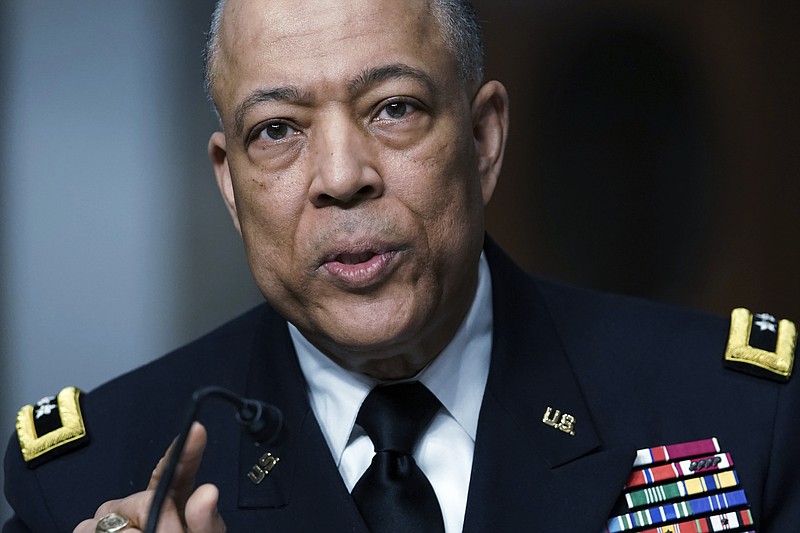WASHINGTON (AP) — Defense Department leaders placed unusual restrictions on the National Guard for the day of the Capitol riot and delayed sending help for hours despite an urgent plea from police for reinforcement, according to testimony Wednesday that added to the finger-pointing about the government response.
Maj. Gen. William Walker, commanding general of the District of Columbia National Guard, told senators the then-chief of the Capitol Police requested military support in a “voice cracking with emotion” in a 1:49 p.m. call as rioters began pushing toward the Capitol. Walker said he immediately relayed the request to the Army but did not learn until after 5 p.m. that the Defense Department had approved it.
Guard troops who had been waiting on buses were then rushed to the Capitol, arriving in 18 minutes, Walker said.
The hourslong delay cost the National Guard precious time early in the Jan. 6 rioting, with Walker saying he could have gotten personnel into the building within 20 minutes of getting approval. As it stood, the support did not happen until the evening.
The delay also stood in contrast to the swift authorization for National Guard support that Walker said was granted in response to the civil unrest that roiled Washington in June as an outgrowth of racial justice protests.
A senior Pentagon official who testified, Robert Salesses, said it took time for the Army to sort out what the National Guard was being asked to do and what its support might look like, especially since the Capitol Police days earlier had not asked for any help.
Mindful of criticism that the response to the demonstrations last spring was heavy-handed, military officials were also concerned a substantial National Guard presence at the Capitol would look bad and might inflame the mob, Walker said.
“The Army senior leadership” expressed “it would not be their best military advice to have uniformed Guardsmen on the Capitol,” Walker said.
The Senate hearing is the latest about the missed intelligence and botched efforts to gather National Guard troops as a mob of then-President Donald Trump’s supporters laid siege to the Capitol.
Taken together, the hearings have spelled out the challenge law enforcement officials face in sorting through unverified tips but also highlighted how police inadequately prepared for the Trump loyalists; that FBI warnings about the threat of violence did not reach top police officials; and requests for aid were not promptly answered.
“We in the FBI want to bat 1,000, and we want to not have this ever happen again,” said Jill Sanborn, the bureau’s top counterterrorism official and one of the witnesses. “So we’re asking ourselves exactly the questions that you’re asking: Is there a place we could have collected more (intelligence)? Is there something we could have done?”
Meanwhile, the Capitol Police disclosed the existence of intelligence of a “possible plot” by a militia group to breach the Capitol on Thursday. The revelation, coming as the acting police chief was testifying before a House subcommittee, differed from an earlier advisory from the House sergeant-at-arms that said police had no indication any such violence was planned.
Much of the focus at Wednesday’s Senate hearing was communications between the National Guard and the Defense Department. Walker described an “unusual” directive that required Pentagon approval before deploying a specialized 40-member “quick reaction force” and before relocating personnel from one traffic intersection to another.
As events escalated Jan. 6, then-Capitol Police Chief Steven Sund asked him for National Guard help in a call and then again on a call with Army officials, who said they did not “think that it looked good” to have a military presence.
“The response to the request took too long, so I think there needs to be a study done to make sure that never happens again,” Walker said. “It shouldn’t take three hours to get a yes or no answer.”
That account was consistent with the recollection of Robert Contee, the acting chief of police for the Metropolitan Police Department, who told lawmakers last week that he was “stunned” by the delayed response. Contee said Sund pleaded with Army officials to deploy National Guard troops as the rioting escalated.

